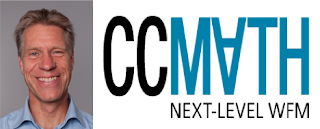The Challenges surrounding Flexibility by Prof. Dr. Ger Koole

Today, as I’m writing this blog, is the first really warm summer day in Holland. Every WFM professional knows that this means less calls which arrive earlier in the day (unless you’re in airco sales). This results in overstaffing, especially in the afternoon. To avoid this we need flexibility. Perhaps some agents want to leave early, but the contract should allow it. Or you have some back-office work to do or trainings that can be scheduled, or even calls from a country where the weather is different.
Flexibility has many uses and faces. It has to do with when agents work and what they do. And both long and short term… At the same time flexible contracts that allow you to schedule more hours for the retail peak of the holiday season, and multi-channel agents who can deal with short-term fluctuations that would otherwise make their occupancy too low.
But flexibility also has its downsides. Agents often need a guaranteed number of working hours to earn a decent living and have other obligations and preferences limiting their availability. Having too many skills leads to low proficiencies on some of the skills, leading to bad service and unhappy agents. And flexibility comes at a price: usually flexible contracts cost more per productive hour and training agents costs time and money.
Fortunately, we do not need full flexibility. For all forms of flexibility it holds that the first agents having this form of flexibility help a lot, but then the returns decrease. And because the costs for flexibility increase linearly, there is a sweet spot with the optimal amount of flexibility.
How much flexibility do you need? And what type of flexibility? A bit of everything, but how much is really hard to answer. It depends on many factors, such as the error of your forecasts, your routing, the labor rules, etc. To compute it you cannot simply use the Erlang formula, but you need long-term simulations taking all aspects of your call center into account. There are some rules of thumbs however. If your SL and your occupancy are good and consistent over the day, then you probably have enough flexibility built into your system, you might even be able to do with a little bit less. If your SL is good or even higher than required, and your occupancy is too low, then you’re overstaffed. If your SL and occupancy fluctuate a lot, around the required levels, then you probably lack flexibility, or you are not able to use the flexibility you already have. Finally, better forecasting makes for better capacity plans and schedules reducing the need for flexibility, and if you consistently need to scale up or down then you probably make a systematic error in your forecast or schedule, you are always too low or too high.
Flexibility is crucial to obtain your SL and keep costs under control, but it also comes at a cost… it makes the control of your call center more complicated. Not all scheduling tools take advantage of all possibilities, and also multi-skill multi-channel intra-day management is hard to do optimally. Highly skilled WFM professionals might be the answer, but they are very hard to find and costly again. And even when a smart mathematician was watching all metrics in real time she would not be able to react quickly enough to changes in load or oversee all consequences of removing one agent on all skills and channels. The answer? Software, but advanced enough that it makes good automatic decisions. Reaction is instantaneous and you only need a smart mathematician once. The foundation is good routing software which does most of intra-management automatically, no more need for intra-day changes in skill settings. But also smart scheduling software can deal automatically with requests for a day off. This frees valuable resources from day-to-day processes allowing them to work on what really matters: improving the design of all aspects of the call center.
Ger is full professor at Vrije Universiteit Amsterdam and founder and chief scientist at CCmath. He has been a guest author for WFManagement on a number of occasions, you can find his other posts here: Ger Koole Articles. To found out more about CCmath and its products, click here: CCmath.com. The author thanks Wout Bakker and Bas Hoogink for their feedback.






Responses